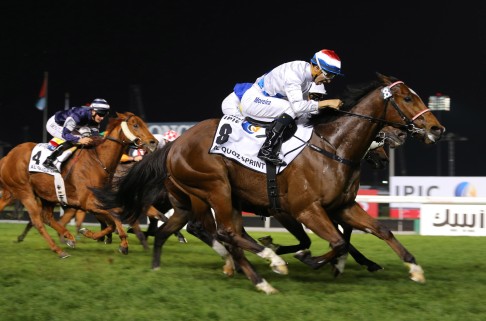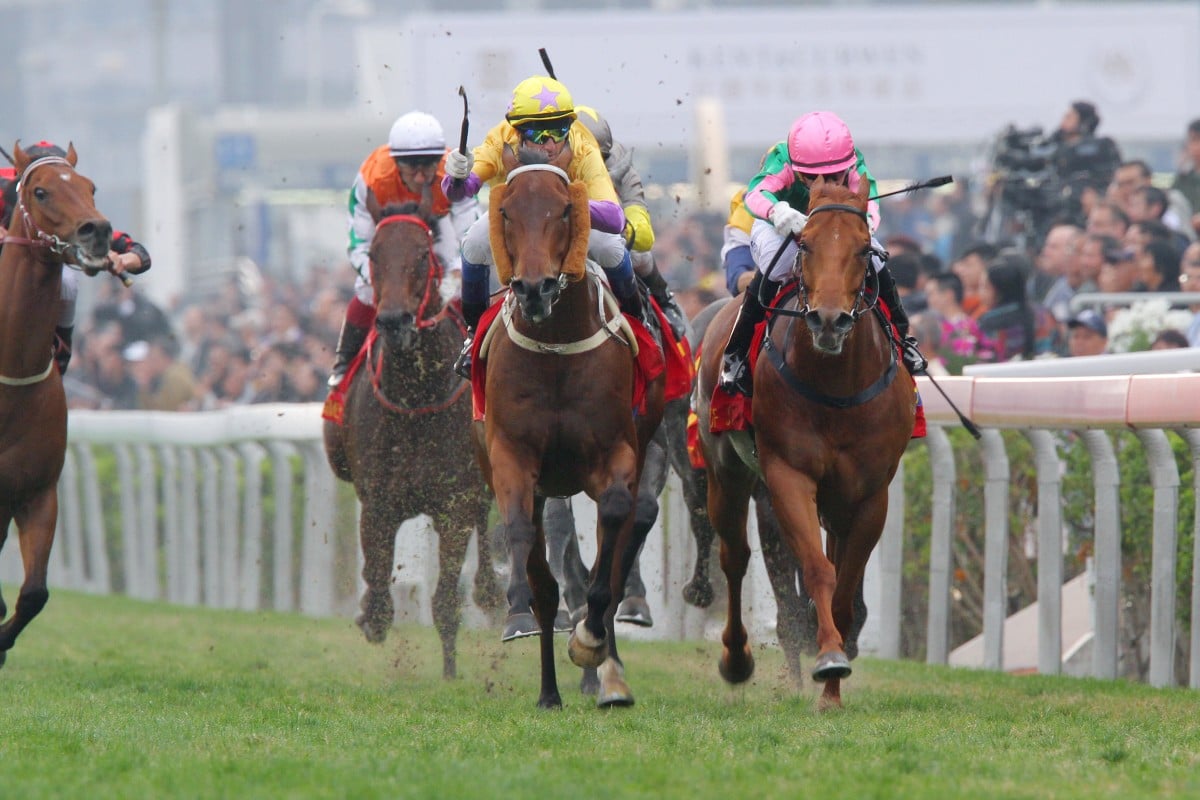A moveable outside rail will be used to alleviate wear and tear on Sha Tin’s straight course next season, but Jockey Club officials say a “fast lane” track bias is not the primary reason behind moving the Kent & Curwen Centenary Sprint Cup.
Executive director of racing Bill Nader yesterday announced a false rail would be placed four metres in from the outside fence for straight races at selected meetings and the only top-level race held up the straight would lose its Group One status.
As the workload on the 1,000m chute has grown with more trials, the straight course has increasingly favoured runners drawn towards the outside and racing closest to the grandstand-side fence.
As part of an increase in prize money across all races, which included a boost of HK$1.4 million to HK$8 million for the Centenary Sprint Cup, it was confirmed the first leg of the sprint series would be stretched from 1,000m to 1,200m, but Nader said the distance change was not necessarily linked to the apparent bias.
“We had already had preliminary discussions with trainers. We aren’t blind to those bias issues and we think moving the outside fence in will help correct or reduce the problem,” he said.
“As far as the Centenary Sprint Cup move, that was more to do with a lack of depth at the distance. Basically, we don’t think we have enough Group One standard horses over 1,000m and we think a 1,200m event will be better received.”
The Centenary Sprint Cup was changed from 1,200m to 1,000m in 1994 and it was then elevated to Group One status in 2000, after which arguably Hong Kong’s two greatest sprinters won twice; Silent Witness (2004-05) and Sacred Kingdom (2010-11).
The race, held in late January, has also provided an ideal progression for horses heading to Dubai’s Al-Quoz Sprint in March, with Amber Sky taking the double in 2014 and Eagle Regiment placing at Meydan after his 2013 Sha Tin victory.

“We don’t think changing the distance will stop those types of horses being able to head overseas to a race like the Al-Quoz,” Nader said.
“And we will compensate with more Class One opportunities at 1,000m. With a horse population of around 1,200, we need to prioritise. We are plagued by smallish fields in those 1,000m races, not just this race, but also the other 1,000m features and Class Ones.”
Nader also outlined an overall 7.5 per cent increase in prize money for next season, similar to last term, and again slanted towards the high end, with Class One, Two and Three purses each growing more than 9 per cent, and Class Four and Five receiving smaller increases.
The first two legs of the four-year-old series also received substantial support, with the Hong Kong Classic Mile and Hong Kong Classic Cup, each climbing to HK$10 million a piece, up from HK$8 million and HK$6 million, respectively.
In other news, jockey Karis Teetan has been ruled out for the last three meetings of the season after scans revealed a fractured right collar bone and ribs following his fall from Gideon, which broke down, on June 24.

















